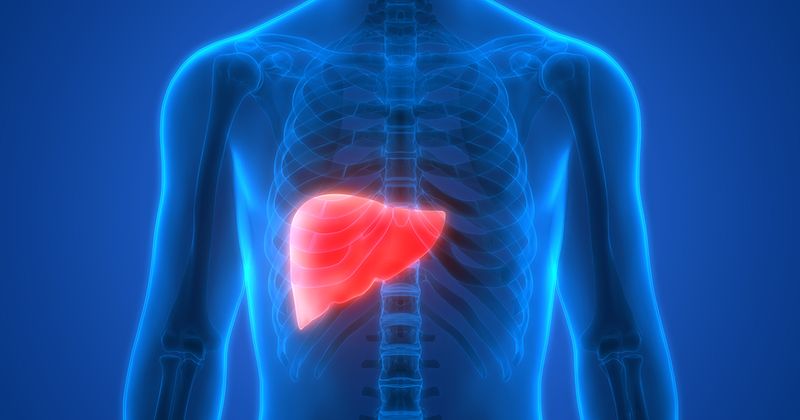PLX065 reduces liver fat content, prevents worsening of fibrosis in NASH
WASHINGTON — PXL065, a novel PPAR gamma-sparing chemical entity of pioglitazone, reduced liver fat content with no dose-dependent effect on weight gain in patients with nonalcoholic steatohepatitis, according to late-breaking data.
“Pioglitazone has been extensively studied for many years. ... There have been at least six biopsy trials of varying durations, varying numbers of patients included in the trial, each showing histopathological and biochemical benefit,” Stephen A. Harrison, MD, FAASLD, medical director for Pinnacle Clinical Research and president of Summit Clinical Research in San Antonio, said at The Liver Meeting.

“It’s been shown that the S enantiomer [in pioglitazone] is what is linked to the adverse event profile of weight gain, fluid retention and other adverse events,” he said. “PXL065 is a deuterium stabilized single stereoisomer that selectively mediates the non-PPAR gamma effects of pioglitazone but retains efficacy in preclinical NASH models with no significant weight gain or fluid retention.”
In the DESTINY1 phase 2a study, Harrison and colleagues aimed to validate the use of PXL065 in 117 patients with noncirrhotic NASH, who were randomized to receive daily oral doses of PLX065 7.5 mg, 15 mg, 22.5 mg or placebo for 36 weeks.
The primary endpoint was relative percent change in liver fat content assessed by MRI-proton density fat fraction, and other outcomes of interest included histology from paired liver biopsies, liver enzymes, biomarkers of fibrosis, adiponectin, lipids, glycemic parameters and safety and tolerability.
According to results, all PLX065-treated patients achieved the primary endpoint and up to 40% achieved a 30% relative reduction in liver fat content. Harrison also noted improvements in alanine aminotransferase, fibrosis biomarkers and fibrosis risk scores. Histology analysis revealed that 35% to 50% of patients treated with PXL065 achieved fibrosis improvement compared with 17% of patients treated with placebo. NASH resolution and fibrosis improvement occurred in 15% to 33% of treated patients compared with 13% of placebo. Glucose control also improved and placebo-adjusted change in HbA1C reached –0.41% (baseline 6.07%-6.25%) with no dose-dependent effect on body weight.
“There were significant reductions in liver fat content achieving the primary endpoint an all three doses. ... Noninvasive assessments of inflammation-fibrogenesis showed positive effects, there were favorable trends for histology with the strongest to reduce and prevent worsening of fibrosis,” Harrison said. “These results are very promising, and the next steps include a pivotal trail design and dose selection.”

